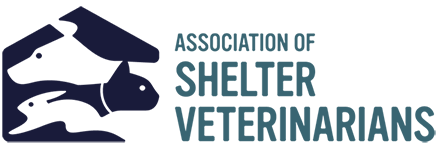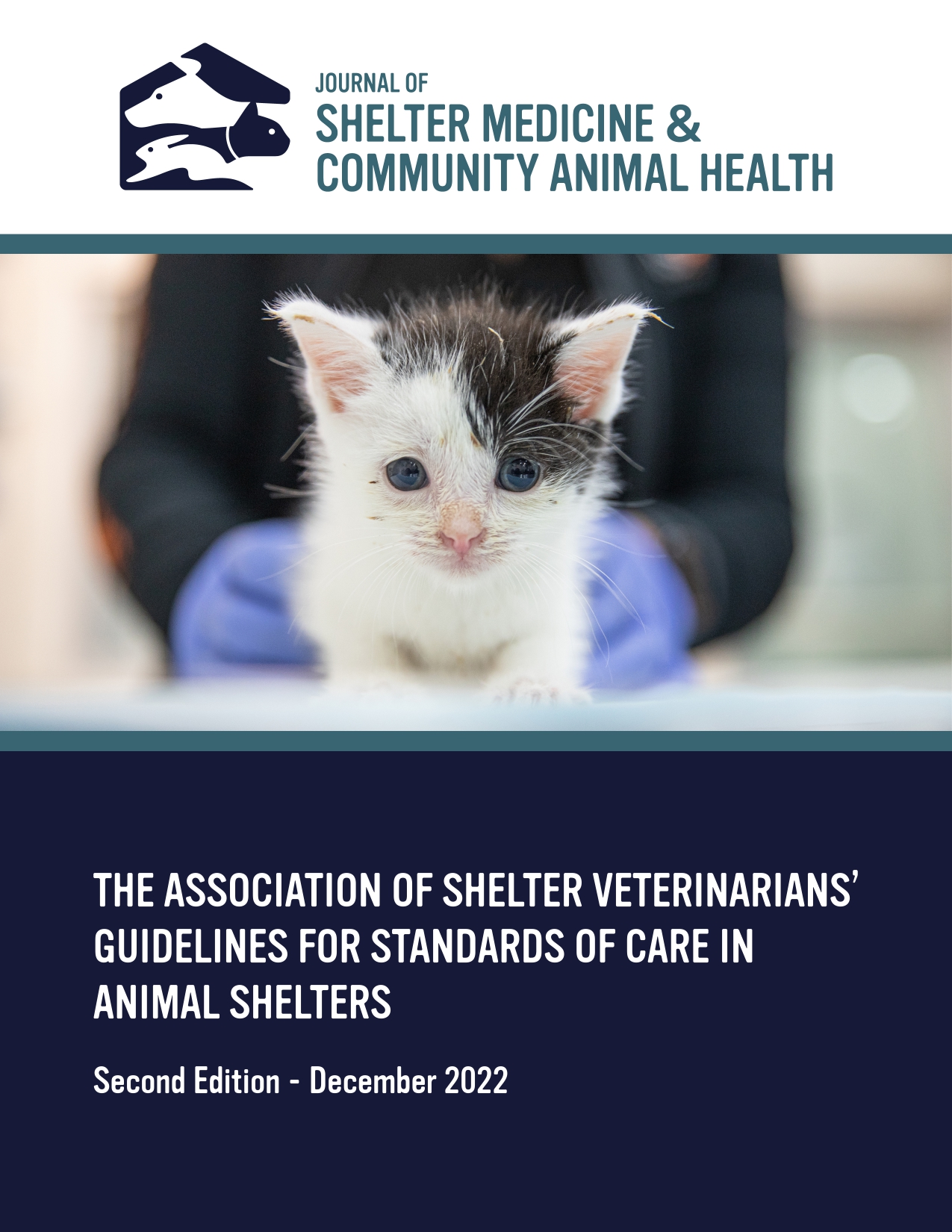Unlocking Collaborative Dynamics: Exploring Veterinarian-Leadership Relationships in Animal Shelters
DOI:
https://doi.org/10.56771/jsmcah.v4.108Keywords:
veterinarian, leadership, shelter medicine, animal shelter, communicationAbstract
Introduction: Veterinarians and organizational leaders play crucial roles in the success of animal shelters. Although both groups share a common mission, differing priorities and perspectives may lead to challenges that affect organizational success. This study explored attitudes of veterinarians and leaders toward collaboration and provides recommendations to enhance organizational effectiveness.
Methods: An online survey collected data from 179 veterinarians and leaders of animal sheltering organizations on attitudes toward veterinarian-leader collaboration between June and August 2023. A composite score of Likert-type items measured attitudes toward veterinarian-leader relationship effectiveness (ATVLRE). Statistical tests compared responses across groups, while qualitative analysis identified recurring themes.
Results: Differences were identified in ATVLRE among non-veterinarian leaders, veterinarian leaders, and veterinarian non-leaders. Non-veterinarian leaders reported the highest positive ATVLRE (M = 4.0, SD = 0.6), followed by veterinarian leaders (M = 3.7, SD = 1.0) and veterinarian non-leaders (M = 3.1, SD = 0.9). Statistically significant differences were found between these groups, particularly between non-veterinarian leaders and veterinarian non-leaders (Cohen d = 1.1). The most reported challenge for veterinarian non-leaders was ‘lack of effective communication’ (70%; n = 31/44), compared to veterinarian leaders (54%; n = 27/50) and non-veterinarian leaders (27%; n = 22/27). Additionally, ‘differences in priorities or conflicting goals’ were the top challenge for veterinarian leaders (66%; n = 33/50), while non-veterinarian leaders most frequently cited ‘managing expectations and demands’ (55%; n = 45/82). Communication was the primary contributor to successful relationships across all groups (68%; n = 122/179).
Conclusion: This study revealed distinct attitudes within animal shelters and identified the critical role of communication in effective collaboration. Despite divergent attitudes, all groups emphasized constructive communication for fostering successful veterinarian-leader relationships. Understanding role-based perceptions can guide strategies to enhance organizational effectiveness and improve animal welfare.
Downloads
References
1.
Laderman-Jones BE, Hurley KF, Kass PH. Survey of Animal Shelter Managers Regarding Shelter Veterinary Medical Services. Vet J. 2016;210:68–76. doi: 10.1016/j.tvjl.2016.02.007
2.
Burns K. The Evolution of Shelter Medicine: Animal shelters Home to a New Breed of Veterinary Medicine. J Am Vet Med Assoc. 2006;229(10):1543–1545. doi: 10.2460/javma.229.10.1541
3.
Foley JE. The Educational Discipline of Shelter Medicine. J Vet Med Educ. 2003;30(4):379–382. doi: 10.3138/jvme.30.4.379
4.
American Veterinary Medical Association. Joint AVMA-FVE-CVMA Statement on the Roles of Veterinarians in Promoting Animal Welfare. Accessed Nov 1, 2024. https://www.avma.org/resources-tools/avma-policies/joint-avma-fve-cvma-roles-veterinarians-promoting-animal-welfare
5.
American Veterinary Medical Association. The Veterinarian’s Role in Animal Welfare. 2015. Accessed Nov 1, 2024. https://ebusiness.avma.org/files/productdownloads/vetsroleinaw.pdf
6.
McCobb E, Crawford PC, Harrold ML, et al. Shelter Medicine Sustainability from an Academic Perspective: Challenges and Issues. J Vet Med Educ. 50:615–616. doi: 10.3138/jvme-2022-0080
7.
Almcrantz SR, Walz EJ, Spencer TG. Veterinarian of Record Relationships for Animal Shelters: Differences in Expectations between Veterinarians and Nonveterinarian Shelter Administrators. J Shelter Med Community Animal Health. 2024;3(1):2–3. doi: 10.56771/jsmcah.v3.70
8.
2023 Statistics – Shelter Animals Count. Shelter Animals Count. Accessed May 2, 2024. www.shelteranimalscount.org/stats/
9.
Turner P, Berry J, Macdonald S. Animal Shelters and Animal Welfare: Raising the Bar. Can Vet J. 2012;53(8):893–896.
10.
Squires M, Tourangeau A, Spence Laschinger HK, Doran D. The Link Between Leadership and Safety Outcomes in Hospitals. J Nurs Manag. 2010;18(8):914–925. doi: 10.1111/j.1365-2834.2010.01181.x
11.
Cristina Gasparino R, Daiana Mendonça Ferreira T, Ceretta Oliveira H, Fernanda dos Santos Alves D, Pazetto Balsanelli A. Leadership, Adequate Staffing and Material Resources, and Collegial Nurse–Physician Relationships Promote Better Patients, Professionals and Institutions Outcomes. J Adv Nurs. 2021;77(6):2739–2747. doi: 10.1111/jan.14805
12.
Salehnejad R, Ali M, Proudlove NC. The Impact of Management Practices on Relative Patient Mortality: Evidence from Public Hospitals. Health Serv Manage Res. 2022;35(4):240–250. doi: 10.1177/09514848211068627
13.
Zhenjing G, Chupradit S, Ku KY, Nassani AA, Haffar M. Impact of Employees’ Workplace Environment on Employees’ Performance: A Multi-Mediation Model. Front Public Health. 2022;10:890400. doi: 10.3389/fpubh.2022.890400
14.
Wei H, Sewell KA, Woody G, Rose MA. The State of the Science of Nurse Work Environments in the United States: A Systematic Review. Int J Nurs Sci. 2018;5(3):287–300. doi: 10.1016/j.ijnss.2018.04.010
15.
Aiken LH, Clarke SP, Sloane DM, Lake ET, Cheney T. Effects of Hospital Care Environment on Patient Mortality and Nurse Outcomes. J Nurs Adm. 2008;38(5):223–229. doi: 10.1097/01.NNA.0000312773.42352.d7
16.
Goula A, Rizopoulos T, Stamouli MA, Kelesi M, Kaba E, Soulis S. Internal Quality and Job Satisfaction in Health Care Services. Int J Environ Res Public Health. 2022;19(3):1496. doi: 10.3390/ijerph19031496
17.
Tsai Y. Relationship between Organizational Culture, Leadership Behavior and Job Satisfaction. BMC Health Serv Res. 2011;11:98. doi: 10.1186/1472-6963-11-98
18.
Brewer CS, Kovner CT, Djukic M, et al. Impact of Transformational Leadership on Nurse Work Outcomes. J Adv Nur. 2016;72(11):2879–2893. doi: 10.1111/jan.13055
19.
Moore IC, Coe JB, Adams CL, Conlon PD, Sargeant JM. The Role of Veterinary Team Effectiveness in Job Satisfaction and Burnout in Companion Animal Veterinary Clinics. J Am Vet Med Assoc. 2014;245(5):513–524. doi: 10.2460/javma.245.5.513
20.
Powell L, Reinhard CL, Serpell J, Watson B. Workplace Relations and Opportunities for Career Development Impact the Retention of Veterinarians in Shelter Medicine. Front Vet Sci. 2021;8:732105. doi: 10.3389/fvets.2021.732105
21.
Graen GB, Uhl-Bien M. Relationship-Based Approach to Leadership: Development of LEADER-MEMBER EXCHANGE (LMX) Theory of Leadership over 25 Years: Applying a Multi-Level Multi-Domain Perspective. Leadersh Q. 1995;6(2):219–247. doi: 10.1016/1048-9843(95)90036-5
22.
Andersen I, Buch R, Kuvaas B. A Literature Review of Social and Economic Leader–Member Exchange. Front Psychol. 2020;11:111474. doi: 10.3389/fpsyg.2020.01474
23.
Epstein RM, Beach MC. ‘I Don’t Need Your Pills, I need Your Attention:’ Steps toward Deep Listening in Medical Encounters. Curr Opin Psychol. 2023;53:101685. doi: 10.1016/j.copsyc.2023.101685
24.
Buffington A, Wenner P, Brandenburg D, Berge J, Sherman M, Danner C. The Art of Listening. Minn Med. 2016;99(6):46–48.
25.
van Dulmen S. Listen: When Words Don’t Come Easy. Patient Educ Couns. 2017;100(11):1975–1978. doi: 10.1016/j.pec.2017.06.021
26.
Naeem M, Ozuem W, Howell K, Ranfagni S. A Step-By-Step Process of Thematic Analysis to Develop a Conceptual Model in Qualitative Research. Int J Qual Methods. 2023;22:2–14. doi: 10.1177/16094069231205789
27.
Python Software Foundation. Python Language Reference, version 3.10.6 [Computer software]. 2022. Accessed Feb 6, 2024. https://www.python.org
28.
Harris CR, Millman KJ, van der Walt SJ, et al. Array Programming with NumPy. Nature. 2020;585(7825):357–362. doi: 10.1038/s41586-020-2649-2
29.
Virtanen P, Gommers R, Oliphant TE, et al. SciPy 1.0: Fundamental Algorithms for Scientific Computing in Python. Nat Methods. 2020;17:261–272. doi: 10.1038/s41592-019-0686-2
30.
McKinney W. Data Structures for Statistical Computing in Python. In: van der Walt S, Millman J, eds. Proceedings of the 9th Python in Science Conference. SciPy; 2010:56–61.
31.
Biggs J, Madnani N. FactorAnalyzer: A Factor Analysis tool written in Python. Educational Testing Service; 2024. Accessed Feb 20, 2024. https://github.com/EducationalTestingService/factor_analyzer
32.
Seabold S, Perktold J. Statsmodels: Econometric and Statistical Modeling with Python. In: Proceedings of the 9th Python in Science Conference. 2010:57–61.
33.
Vallat R. PingouIn: Statistics in Python. Journal of Open Source Software. 2018;3(31):1026. doi: 10.21105/joss.01026
34.
Hunter JD. Matplotlib: A 2D Graphics Environment. Computing in Science & Engineering. 2007;9(3):90–95. doi: 10.1109/MCSE.2007.55
35.
Waskom ML. Seaborn: Statistical Data Visualization. Journal of Open Source Software. 2021;6(60):3021. doi: 10.21105/joss.03021
36.
Knezevic A, Olcoń K, Smith L, Allan J, Pai P. Wellness Warriors: A Qualitative Exploration of Healthcare Staff Learning to Support Their Colleagues in the Aftermath of the Australian Bushfires. Int J Qual Stud Health Well-being. 2023;18(1):2167298. doi: 10.1080/17482631.2023.2167298
37.
Hughes V, Sistrunk K, Hughes H. Nurse Leader Breaks Through Glass Ceiling: Making History as First Air Force Nurse Major General (1999–2005). Mil Med. 2023;188(5–6):e1178–e1185. doi: 10.1093/milmed/usab449
38.
Ekwonye AU, Brueggemann A, Gerdes SP, et al. We Will All Age and One Day be Older Adults Ourselves: College Students’ Reflections on Facilitating Compassionate Presence (CP) Sessions for Older Adults. Gerontol Geriatr Educ. 2023;44(2):298–315. doi: 10.1080/02701960.2022.2057968
39.
Kofman F. Conscious Business: How to Build Value through Values. Sounds True; 2006.

Additional Files
Published
Issue
Section
License
Copyright (c) 2025 Clinton Ross Mauck, Marjorie Robin Vincent, Jyothi Vinnakota Robertson

This work is licensed under a Creative Commons Attribution 4.0 International License.









